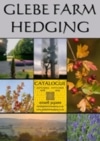
Frequently Asked Questions
Poisonous Plants
The following listed plants are known to contain toxins, which may be harmful to humans and animals:
Aesculus(horse chestnut) – somewhat poisonous
xCuprocyparis leylandii(Leyland cypress) – skin irritant
Euonymus(spindle tree) – somewhat poisonous
Ligustrum(privet) – somewhat poisonous
Prunus laurocerasus(cherry laurel, laurel) – poisonous
Prunus lusitanica(Portugal laurel) – seed kernels are poisonous
Rhamnus(alder buckthorn, common buckthorn) – poisonous; skin irritant
Symphoricarpus(snowberry) – poisonous
Taxus(Yew) poisonous
Drawn from the HTA list of harmful plants. This list is not exhaustive and other listed plants may have harmful effects depending on levels of exposure/consumption. If planting in situations where grazing/browsing animals may have access to plants it is best to seek further advice.
When can I start clipping my hedge?
Once the plants are settled in, lightly trim the sides to give the hedge some shape – usually leave the top leaders until they have reached the height you want the hedge to be
Many species benefit from hard pruning by a third or more at planting or by early spring after planting, to encourage basal growth. These include all our native hedge mixes, Hawthorn, Blackthorn, Privet, Lonicera nitida, Cotoneasters, and Laurel.
How quickly will my hedge grow?
Well cared for plants should form a good hedge after 3 to 5 years depending on variety.
Best Hedge Plants or Trees for wet sites and clay soils?
Best Hedge Plants or Trees for dry, sandy or stony soils?
Best Hedge Plants or Trees for chalky soils?
Best Hedge Plants or Trees for windy, exposed sites?
Best Hedge Plants or Trees for coastal areas?
Best Hedge Plants or Trees for dense shade?
HEDGE PLANTS FOR A PURPOSE
Evergreen Hedge plants: Box, Cotoneaster (lacteus, franchetii, simonsii), Cotton Lavender, Holly, Holm Oak, Japanese Holly, Common Laurel, Portuguese Laurel, Lavenders, Leyland Cypress, Lonicera, Privets, Western Red Cedar and Yew Hedging. (NB. Green/Purple Beech and Hornbeam both hold onto their brown Autumn leaves through Winter)
Fast Growing Hedge plants: Blackthorn, Hawthorn, Hornbeam, Leyland Cypress, Lonicera nitida, Privet, Dog Rose, Western Red Cedar and many native hedge plants.
Countryside Stewardship Hedging:: Mixed native hedging, grant eligible under Mid and Higher Tier schemes. Traditional Native Hedge Mix, Exotic Native Hedge Mix, Thornless Native Hedge Mix. Plant at a minimum of 6 plants per metre, double row 40cm apart. Planting window:1st November – 31st March
How many plants per metre?
– Beech and Hornbeam, plant @ 3 per metre single row or @ 5 per metre double row.
– Common Box and Japanese Holly, plant @ 5-6 per metre single row.
– Dwarf Box, plant @ 6-8 per metre single row.
– Yew and Laurel, plant @ 2 per metre single row
– Privet, Lonicera, Lavenders, Cotoneasters and Roses, plant @ 3 per metre.


